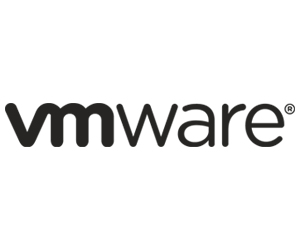How to Manage Applications and Users in a Distributed Environment
Pressures that have arisen as a result of the coronavirus pandemic have prompted massive change for agencies. However, “the biggest issue is the general disruption from the normal,” says Kevin Reed, director of networking, security and cloud management solutions for VMware Federal.
“Federal agencies are going through transformation and modernization, and are leading the charge on zero trust to deliver the highly accelerated digital transformation required to support highly distributed users,” he says.
In practice, this means a significant shift in the way applications are integrated, used and deployed across federal IT stacks. Staff now require the ability to access mission-critical data no matter where they’re located, even as IT teams need better visibility and control of access, use and storage requests.
Reed puts it simply: “Your attack surface changes when you distribute this workload. To achieve an increase in security posture and performance, organizations need to rethink their networking architectures.”
MORE FROM FEDTECH: Find out how containers help agencies develop modern applications.
Deploying Modern Apps in a Consistent and Cohesive Way
While application modernization comes with substantive benefits for federal agencies, it requires a new approach to management and monitoring at scale.
“Many organizations are forced to be reactive to application performance concerns on a site-by-site and app-by-app basis,” Reed says. A modernized load balancing architecture should provision, configure and monitor application delivery from a centralized platform with a distributed model that considers a global topology.
This requires load-balancing solutions that exist alongside applications — whether they’re stored in on-premises bare-metal environments, virtualized in VMware frameworks, managed by cloud services or containerized in specific solutions, such as Kubernetes.
The 7 Critical Elements of Modern Application Deployment
For application modernization to succeed, Reed points to seven key components:
Elasticity: “Applications need the ability to scale,” Reed says. “This is how they can handle surges in traffic that are caused by normal, scheduled events or spikes due to specific, unexpected events. Load balancers must dynamically scale along with them, ensuring critical resource availability, even under unanticipated spikes in demand.”
VMware’s NSX Advanced Load Balancer (NSX ALB) offers predictive autoscaling of load balancing and app resources based on real-time traffic to ensure agencies are ready for anything.
Observability: Holistic insights ensure federal IT teams always know what’s happening across their app environment. NSX ALB provides observability of networks, end users, current security postures and real-time performance data.
Automation: “Automation replaces manual processes and can deliver consistent load-balancing capabilities to applications independent of their physical location,” Reed says. On-demand automation is critical as the volume of new applications rapidly increases.
Consistency: Along with visibility, cross-platform consistency is a critical component of app modernization. This requires complete integration services across public, private and multicloud environments to help teams better understand app performance and troubleshoot any issues that arise. NSX ALB’s centralized management model and automation capabilities ensure uniform configurations across multiple environments.
Orchestration: While app management must occur at the point of deployment, centralized orchestration is required to understand overall network health and security. NSX ALB allows agencies to view, manage and adjust their application networking services from a single point of view.
Self-healing: The scope and scale of federal application deployments now make it impossible for teams to ensure timely response to every application performance, security or balancing issue.
Using a combination of predictive analytics and automation, however, it’s possible to provide instantaneous response to performance issues, while software-based load balancers configured to be active-active can automatically spin up new app instances if the original server, virtual machine or container fails.
Security: Hardware-based web application security solutions are notoriously difficult to manage and scale, and lack app-specific security insights. NSX ALB’s integrated Layer 4–Layer 7 web application firewall provides repeatable, scalable application security. “The web application firewall capability along with a load balancer can inspect web incline traffic from the networking to the application layer to help detect attacks against common security flaws,” Reed says.
Embracing the Art of the Possible for Government Technology
VMware’s NSX ALB makes it possible for federal organizations to streamline application modernization and distribution at scale with comprehensive software load balancing, application security, user-to-app visibility and real-time analytics capabilities.
“Federal customers are now looking to achieve digital transformation, modernize their infrastructure and meet their multicloud goals,” Reed says. “Our solutions provide the visibility, security and performance insights agencies need to customize application policies across their entire IT environment, no matter where the application resides.”
Brought to you by:











